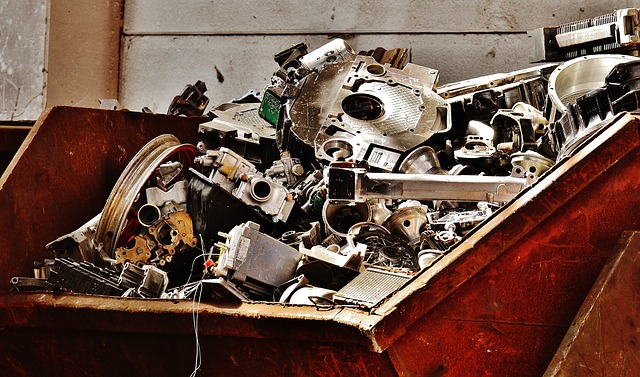- July 3, 2018
- Posted by: David Marshall
- Category: Manufacturing, Productivity

In the past I’ve talked about the importance of measuring every part of a manufacturing company, from machine output to associate productivity. I’ve even said the back office people should be quantifiably measured too, including departments like HR and Purchasing, and even the executives.
That also means measuring your scrap output. While it may seem like an unnecessary step, like alphabetizing documents you’re about to shred, knowing how much scrap you’re discarding can tell you some very important information about your operation.
Scrap is a form of waste, which includes everything from the packaging your raw materials come in, to the trash from the cafeteria, to the recycled office paper and cans from the break rooms. But scrap is also a symptom of bigger issues.
 Scrap also represents not just raw materials that didn’t get made, but finished products that were manufactured and processed, incurring all the costs, but maybe got damaged as it was coming off the final machine or loaded onto a pallet. They’re the items that made it all the way through the process only to have a defect that keeps it from being salable.
Scrap also represents not just raw materials that didn’t get made, but finished products that were manufactured and processed, incurring all the costs, but maybe got damaged as it was coming off the final machine or loaded onto a pallet. They’re the items that made it all the way through the process only to have a defect that keeps it from being salable.
If you can measure the scrap and analyze the reasons for it, and then eliminate the causes of the scrap, then you can increase productivity and bottom line profits.
The most common example I can give is that of a restaurant or a grocer. Their wastage of food is more than just “sell by” dates, and it can be a very costly thing. The idea in both places is to have just enough and not too much. They don’t want to throw anything out at the end of an evening or the end of a product’s selling cycle.
For example, a grocery store will only buy as much milk as they think they can sell in a week. Anything more runs the risk of going bad which would mean throwing it away. A restaurant will only buy as much fish as they can sell over a weekend, and they’ll throw it all away by Tuesday morning. (Warning: Be careful of the fish special on Monday; according to Anthony Bourdain’s Kitchen Confidential, that was the stuff that was fresh on Friday.)
What’s worse for a restaurant is when they prepare a meal, but mess it up so badly that it can’t be served, and they have to dispose of it. Not only do they incur the costs of the food, but the salaries of the cooks, and the overhead costs. It’s like an auto industry recall — somebody didn’t do it right the first time, and now the car maker has to pay a second time to make it right.
Years ago, in one of our plants, we often ran into a problem where 20 foot lengths of conduit were regularly being bent, which made them unsalable. Before I started working there, the practice was to have two guys try to unbend them to see if they could be salvaged. When I got there, we started measuring the number of conduits they were able to save, and we found that they were only recovering about 1 in 20, or 5%. We quickly realized that wasn’t enough to keep the practice up, because it cost us more than we regained just to get that 5%, so we gave up the program.
Our next step was to then figure out how we were losing those conduits in the first place and try to eliminate that from ever happening.
The biggest problem with scrap and waste is that it’s a top down occurrence. Unless the leadership of an enterprise is committed to eliminating waste, it won’t happen. And without objective measurement, they’re not going to know how much they’re losing, what it’s costing them, or how to even go about preventing future waste.
I’ve been a manufacturing executive, as well as a sales and marketing professional, for a few decades. Now I help companies turn around their own business. If you would like more information, please visit my website and connect with me on Twitter or LinkedIn.
Photo credit: Alexas_Fotos (Pixabay, Creative Commons 0)

